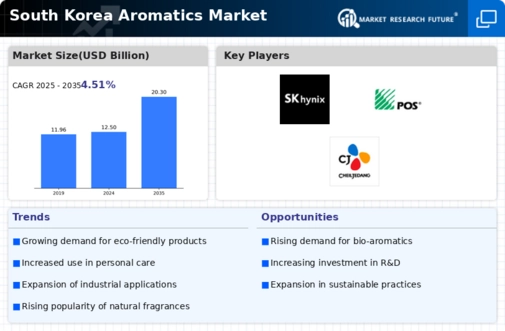The competitive insights of the South Korea Aromatics Market reveal a dynamic landscape characterized by significant advancements, key players, and an increasing demand for aromatic compounds. The market is influenced by both regional trends and global developments, with key aromatic products playing a vital role in various industries, including chemicals, plastics, and personal care. South Korea's position as a major player in the global petrochemical industry underlines the competitive nature of the aromatics market. The country's robust manufacturing capabilities, coupled with technological innovations, have led to a surge in the production and consumption of aromatic hydrocarbons.
This competitive environment necessitates constant adaptation and strategic growth among companies operating in the sector. SOil has established a substantial footprint in the South Korea Aromatics Market, owing to its strategic initiatives and robust product offerings. The company is known for its specialization in a variety of aromatic compounds, which cater to diverse industrial applications. With a focus on sustainability and innovation, SOil has implemented advanced manufacturing processes that enhance operational efficiency while reducing environmental impact. The company’s commitment to high-quality and reliable products has earned it a strong reputation among clients across different sectors, fostering long-term relationships and partnerships.
Additionally, SOil benefits from a skilled workforce and effective supply chain management, further solidifying its competitive edge in the South Korean market. SABIC has significantly bolstered its presence in the South Korea Aromatics Market through a comprehensive range of products and services tailored to meet the needs of local industries. Known for its innovation and quality, SABIC offers a diverse portfolio that includes various aromatic hydrocarbons critical for manufacturing plastics, synthetic fibers, and other chemicals. The company's commitment to research and development has enabled it to remain at the forefront of technological advancements, ensuring continuous improvement in product offerings.
Furthermore, SABIC has successfully engaged in strategic mergers and acquisitions that enhance its market position and expand its capabilities within the aromatics segment. Through these initiatives, SABIC has not only strengthened its operational framework in South Korea but also positioned itself to effectively address the evolving demands of the local market. The combination of high-quality production, strategic investments, and a strong industry presence delineates SABIC's key strengths within the South Korean aromatics landscape.














Leave a Comment